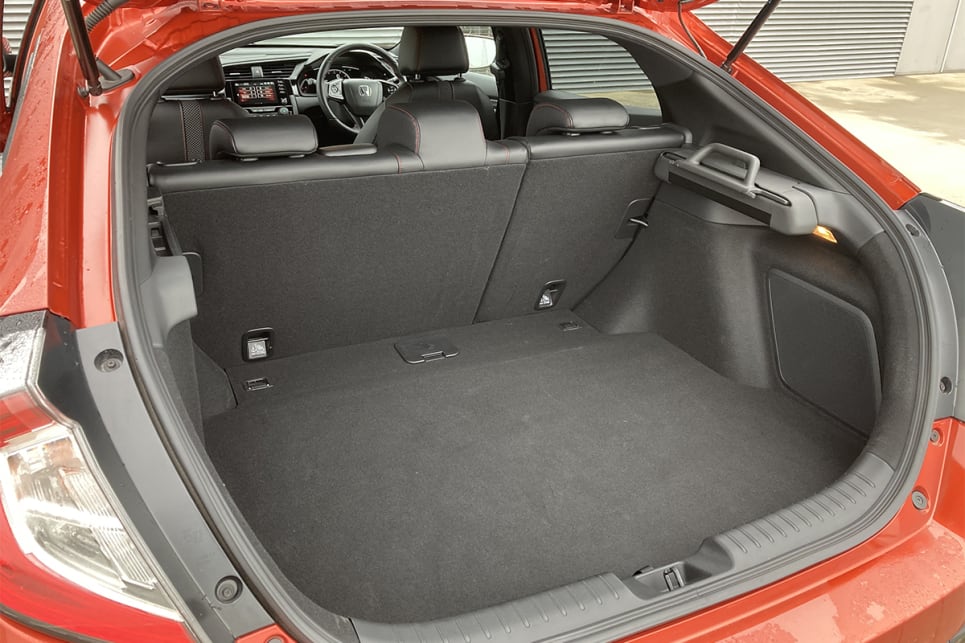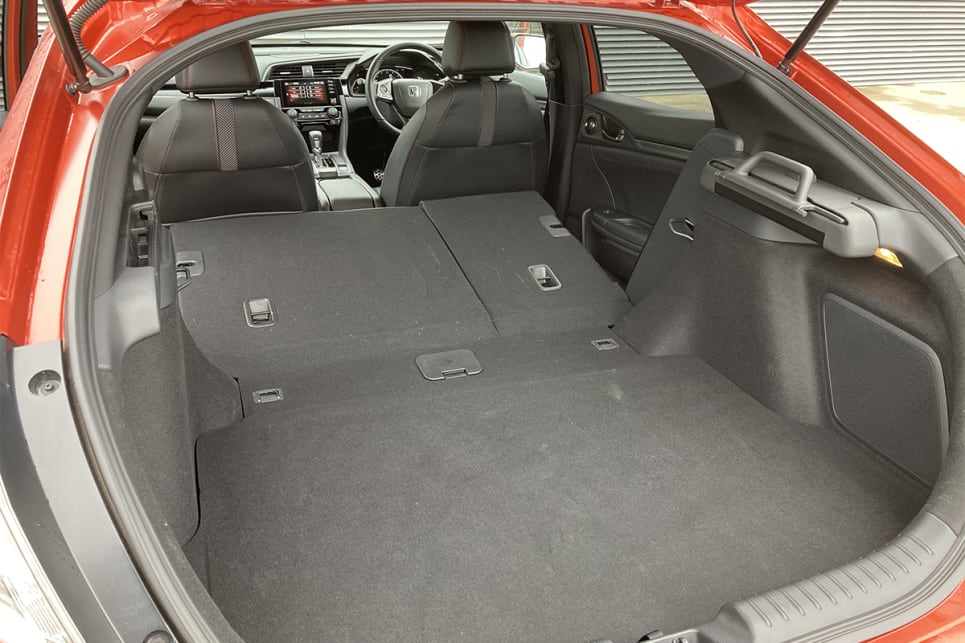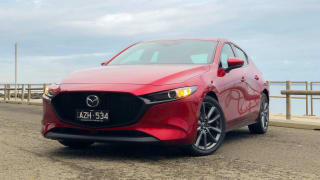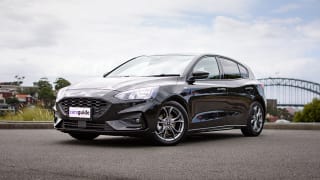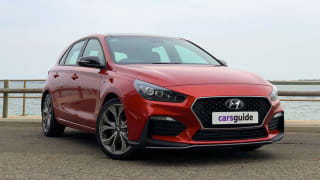First thing’s first. Don’t be misled by the Civic’s evocative ‘RS’ badge. This is no hot hatch of the wild Ford Focus RS variety; that’s the ballistic Type R’s lot in life.
Instead, like a Civic in Lululemon, the RS is the automotive equivalent to an athleisure outfit, striving for a sporty yet stylish and easy fit.

To that end, the $33,540, automatic-only RS continues with the 127kW/220Nm 1.5-litre four-cylinder turbo engine (rather than the 104kW/174Nm 1.8-litre naturally aspirated unit powering the lesser VTi and VTi-S), but introduces larger alloy wheels (up from 17 to 18 inches) shod with top-shelf Michelin Pilot Sport 4 tyres (a massive thumb’s up), reshaped bumpers, a new rear diffuser, different grille and fresh colours.
Stepping inside, the RS adopts auto high-beam headlights (of superb spread but tardy response since sometimes they don’t switch off in time, so dazzle on-coming traffic), physical buttons (including a volume knob at last) for the 7.0-inch touchscreen and dual-zone climate-control systems, and updated seat and dash trim inserts. Still looking fresh.

Only turbo Civics offer Honda’s ‘Sensing’ safety package that brings autonomous emergency braking, forward collision warning with pedestrian detection, adaptive cruise control with stop/go functionality, lane departure warning, lane-keep assist and steering assist, thus almost matching direct rivals like the Corolla and Mazda3 that standardise most of these from base-model up.
There are a couple of driver-assist omissions, though. More on that in the Safety section below.
Other RS goodies include leather upholstery, heated front seats, a powered driver’s seat, LED headlights, a multi-angle reverse camera with inside-lane view to avoid cyclists (brilliant), privacy glass, DAB+ digital radio, Apple CarPlay/Android Auto connectivity, a (smashing) premium audio system and keyless entry/start with walkaway locking. Handy.

The RS undercuts the $35,590 Hyundai i30 N-Line Premium and $35,090 Mazda3 G25 GT (though lesser-equipped grades are available in both), matches the $33,490 Kia Cerato GT Turbo but trails the $32,240 Ford Focus ST-Line with Driver Assist Pack and $32,135 Corolla ZR – but the latter makes do with the standard 2.0-litre engine and the ZR Hybrid for an extra $1500 is substantially down on oomph against this lot.
The spare is a space-saver while all RS colour choices are either metallic or pearlescent, with no cheaper flat paint alternative.






